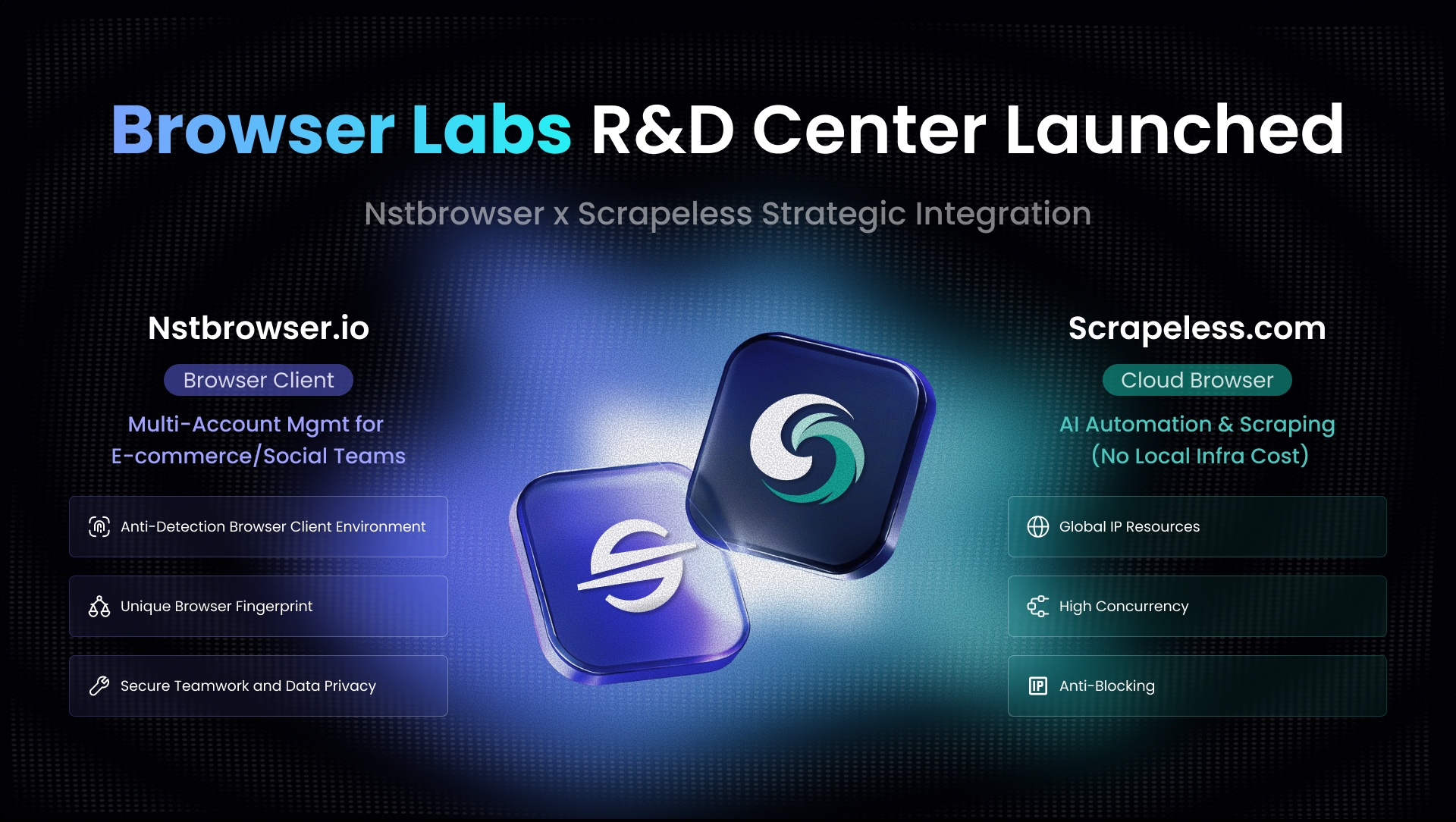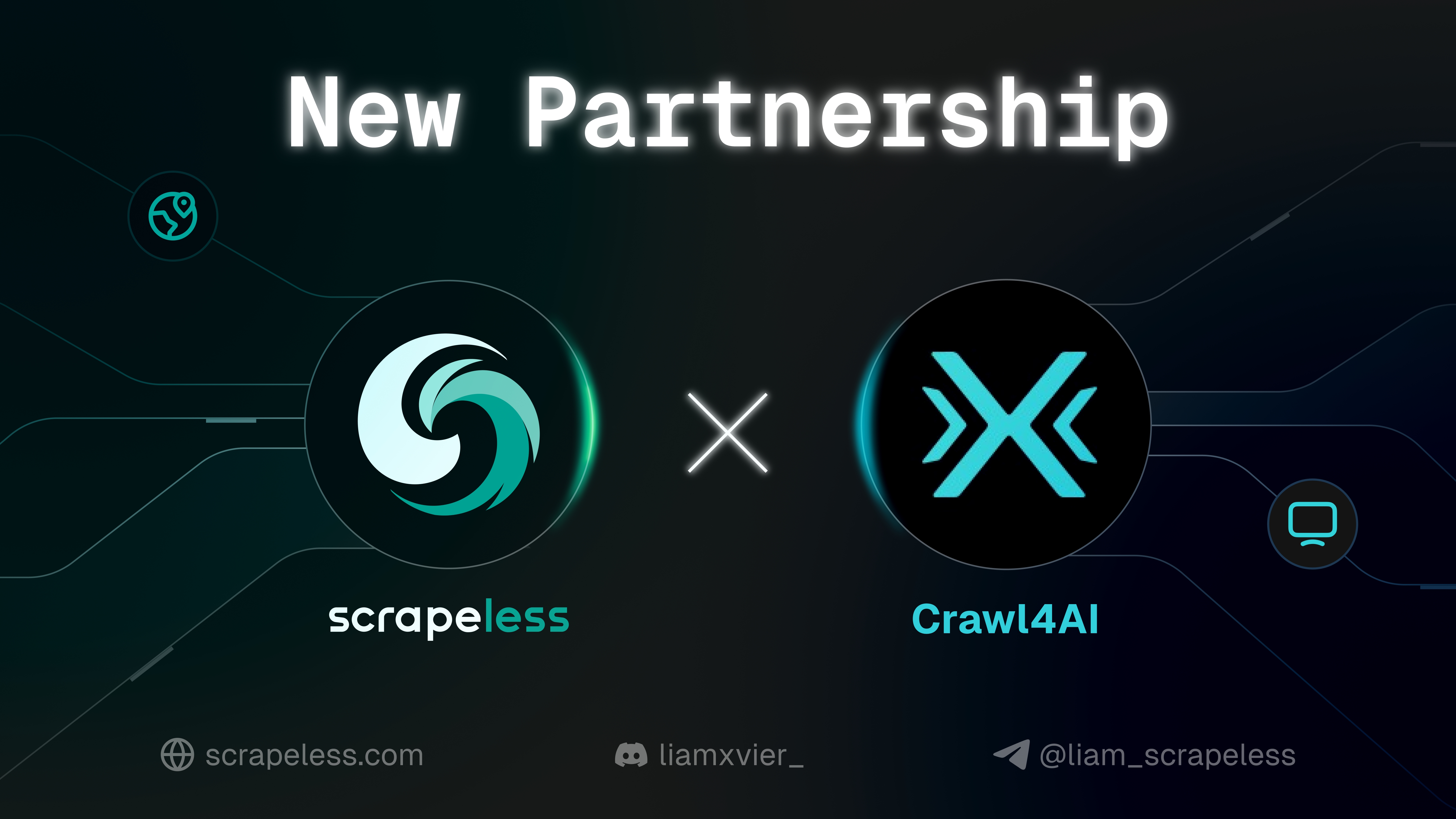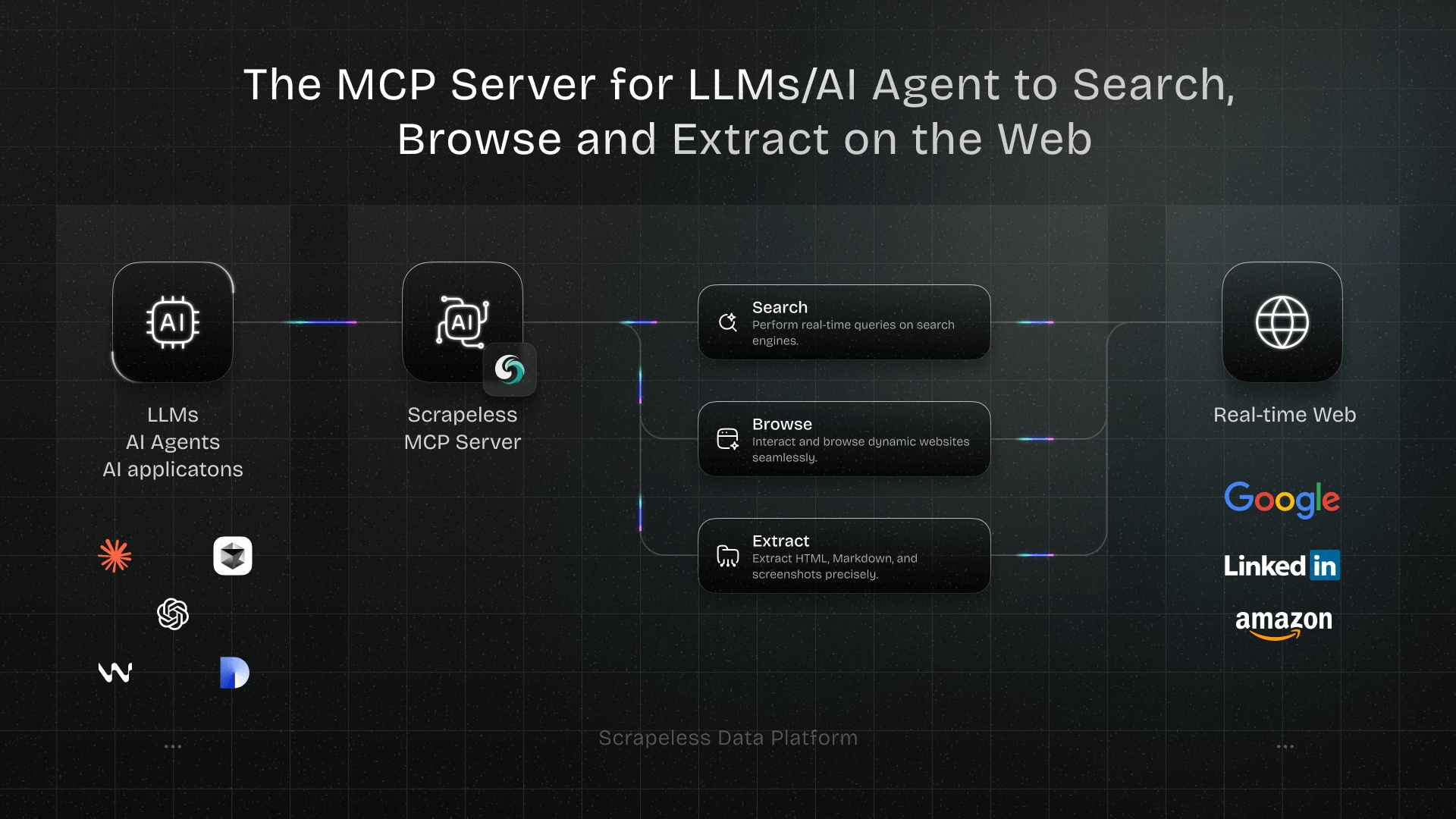FlareSolverr: A Complete Guide to Bypass Cloudflare (2025)
Expert Network Defense Engineer
Web scraping faces a significant hurdle in the form of Cloudflare, a robust web security service designed to protect websites from malicious traffic. Its advanced bot detection mechanisms, including JavaScript challenges and CAPTCHAs, often block legitimate scrapers. For years, FlareSolverr emerged as a popular open-source solution to overcome these defenses. However, as Cloudflare's protections evolve, the effectiveness of such tools is diminishing. This guide provides a comprehensive overview of FlareSolverr, its functionality, and limitations, while highlighting Scrapeless as a more reliable and advanced alternative for bypassing Cloudflare in 2025.
This article will delve into how FlareSolverr works, its setup process, and practical applications. We will also discuss its current challenges and present Scrapeless as a superior, all-in-one solution for consistent and efficient data extraction, ensuring your scraping projects remain successful in the face of ever-evolving anti-bot technologies.
Understanding Cloudflare and Its Challenges for Web Scraping
Cloudflare operates as a content delivery network (CDN) and a web security service, protecting millions of websites from various online threats. While beneficial for website owners, its security measures pose significant challenges for web scrapers.
How Cloudflare Protects Websites
Cloudflare employs several layers of defense to identify and mitigate bot traffic. These include:
- JavaScript Challenges (JS Challenges): When suspicious activity is detected, Cloudflare presents a JavaScript challenge that a legitimate browser can solve, but automated scripts often cannot. This involves executing complex JavaScript code to prove the client is a human browser.
- CAPTCHAs: For more persistent or highly suspicious traffic, Cloudflare may present CAPTCHAs (e.g., reCAPTCHA, hCAPTCHA) that require human interaction to solve, effectively blocking automated scraping tools.
- IP Reputation: Cloudflare maintains a vast database of IP addresses known for malicious activity. If your scraping IP is flagged, it will be blocked or subjected to stricter challenges.
- Browser Fingerprinting: Advanced systems analyze browser characteristics (user-agent, headers, plugins, screen resolution) to detect non-human behavior.
These measures are designed to differentiate between legitimate user traffic and automated bots, making web scraping a constant battle against evolving defenses.
What is FlareSolverr and How Does It Work?
FlareSolverr is an open-source reverse proxy server specifically designed to bypass Cloudflare's anti-bot protection. It acts as an intermediary, sitting between your scraping script and the target website.
The Core Mechanism: Headless Browsers
At its heart, FlareSolverr leverages headless browsers, primarily Puppeteer (which controls Chromium) or Selenium with Undetected ChromeDriver [1]. When your scraping script sends a request to FlareSolverr, instead of directly fetching the webpage, FlareSolverr launches a real browser instance in the background. This headless browser then navigates to the target URL.
This process allows FlareSolverr to:
- Execute JavaScript: The headless browser fully renders the page, executing all necessary JavaScript, including Cloudflare's challenges.
- Solve CAPTCHAs (if simple): It attempts to solve basic CAPTCHAs that can be programmatically handled by a browser.
- Mimic Human Behavior: By using a full browser, FlareSolverr generates legitimate browser fingerprints, cookies, and headers, making the request appear as if it originated from a real user [1].
Once the headless browser successfully bypasses Cloudflare's protection, FlareSolverr extracts the necessary cookies and the rendered HTML content. It then returns this information to your original scraping script, allowing you to proceed with data extraction as if no Cloudflare challenge ever occurred.
Benefits of Using FlareSolverr
FlareSolverr offered several advantages for web scrapers, particularly in its prime:
- Bypassing Cloudflare: Its primary benefit was the ability to overcome Cloudflare's JS challenges and some CAPTCHAs, which were significant roadblocks for many scrapers.
- Open-Source and Free: Being open-source, it was freely available, making it an attractive option for individual developers and small projects with limited budgets.
- Language Agnostic API: FlareSolverr exposes a simple HTTP API. This allowed integration with virtually any programming language (Python, Node.js, Java, etc.) that could make HTTP requests.
- Simulates Real Browsers: By using headless browsers, it could mimic human browsing behavior more effectively than simple HTTP requests, leading to higher success rates against basic anti-bot systems.
Setting Up FlareSolverr: A Step-by-Step Guide
Setting up FlareSolverr typically involves using Docker for ease of deployment. Here's a general outline:
Prerequisites
Before you begin, ensure you have:
- Docker: Installed and running on your system (Windows, macOS, Linux). Docker simplifies the deployment by packaging FlareSolverr and its dependencies into a single container [1].
- Basic Terminal/Command Line Knowledge: For executing Docker commands.
Installation Steps (Using Docker)
-
Pull the FlareSolverr Docker Image:
Open your terminal or command prompt and run:bashdocker pull flaresolverr/flaresolverrThis command downloads the latest FlareSolverr image from Docker Hub.
-
Create and Run the Docker Container:
To run FlareSolverr as an isolated service, execute the following command:bashdocker create --name=flaresolverr -p 8191:8191 -v <PATH_TO_CONFIG_FILES> flaresolverr/flaresolverr docker start flaresolverr--name=flaresolverr: Assigns a name to your container.-p 8191:8191: Maps port8191inside the container to port8191on your local machine, allowing external access.-v <PATH_TO_CONFIG_FILES>: Mounts a volume for configuration files (replace<PATH_TO_CONFIG_FILES>with your desired host path) [1].
-
Verify Installation:
Open your web browser and navigate tohttp://localhost:8191/. You should see a JSON response indicating that FlareSolverr is ready, along with its version and user agent string [1].
Using FlareSolverr in Your Scraping Projects
Once FlareSolverr is running, you can integrate it into your Python (or any other language) scraping script. The process involves sending your target URL to FlareSolverr, which then handles the Cloudflare bypass and returns the session data.
Example with Python Requests
python
import requests
import json
# FlareSolverr API endpoint
FLARESOLVERR_URL = "http://localhost:8191/v1"
TARGET_URL = "https://www.example.com/cloudflare-protected-page"
headers = {"Content-Type": "application/json"}
payload = {
"cmd": "request.get",
"url": TARGET_URL,
"maxTimeout": 60000, # Max timeout for the challenge resolution
}
try:
response = requests.post(FLARESOLVERR_URL, headers=headers, json=payload)
response.raise_for_status() # Raise an exception for HTTP errors
result = response.json()
if result["status"] == "ok":
print("Cloudflare bypass successful!")
print("Response HTML:", result["solution"]["response"])
print("Cookies:", result["solution"]["cookies"])
else:
print("FlareSolverr failed to bypass Cloudflare:", result["message"])
except requests.exceptions.RequestException as e:
print(f"Request to FlareSolverr failed: {e}")In this example, your script sends a POST request to FlareSolverr's API with the target URL. FlareSolverr then performs the headless browser operations and returns the final HTML and cookies, which your script can use for subsequent requests.
Limitations and Challenges of FlareSolverr in 2025
Despite its past utility, FlareSolverr faces increasing challenges in 2025, primarily due to Cloudflare's continuous advancements in bot detection.
Evolving Cloudflare Protections
Cloudflare constantly updates its algorithms and introduces new anti-bot techniques. This means open-source tools like FlareSolverr, which rely on specific browser behaviors, often struggle to keep pace. What works today might be ineffective tomorrow, leading to frequent blocks and maintenance overhead [1].
Resource Intensive and Scalability Issues
Running headless browsers is resource-intensive, consuming significant CPU and RAM. For large-scale scraping operations, this can lead to high infrastructure costs and scalability issues. Managing multiple FlareSolverr instances to handle concurrent requests adds further complexity.
Lack of Active Maintenance
Crucially, the FlareSolverr support team has indicated a deprecation of the tool, stating they will no longer actively maintain it [1]. This lack of ongoing development means it will become progressively less effective against new Cloudflare challenges, making it an unreliable solution for future scraping projects.
Case Study: Diminishing Returns
Consider a scenario where a data analytics company used FlareSolverr to scrape public financial data from multiple websites protected by Cloudflare. Initially, FlareSolverr provided a good bypass rate. However, after a series of Cloudflare updates, the success rate plummeted from over 90% to below 30% within weeks. The company faced constant IP blocks and CAPTCHAs, requiring significant developer time to troubleshoot and find temporary fixes. This highlights the inherent instability of relying on unmaintained, reactive solutions against proactive security systems.
Scrapeless: The Modern Alternative for Cloudflare Bypass
Given the limitations of FlareSolverr, modern web scraping demands a more robust and actively maintained solution. Scrapeless emerges as a superior alternative, offering an all-in-one web scraping API specifically designed to handle complex anti-bot measures, including Cloudflare, effortlessly.
Why Scrapeless is a Better Choice
Scrapeless distinguishes itself by providing a fully managed service that integrates several critical functionalities:
- Automated Cloudflare Bypass: Scrapeless automatically detects and bypasses various Cloudflare protections (JS challenges, CAPTCHAs, WAFs) without requiring manual configuration or headless browser management. It adapts to new challenges in real-time.
- Smart Proxy Rotation and Management: It includes a built-in, intelligent proxy network that handles rotation, selection, and geo-targeting, ensuring optimal performance and anonymity without the user needing to manage proxy pools.
- Headless Browser as a Service: Scrapeless offers headless browser capabilities as a service, meaning you get the benefits of JavaScript rendering without the resource overhead or maintenance burden of running your own instances.
- High Success Rates: Designed for reliability, Scrapeless aims for consistently high success rates even on the most heavily protected websites, allowing developers to focus on data extraction rather than bypass logic.
- Simplified API: With a simple API call, Scrapeless abstracts away the complexities of anti-bot bypass, making it incredibly easy to integrate into existing scraping workflows.
Comparison: FlareSolverr vs. Scrapeless
| Feature | FlareSolverr | Scrapeless |
|---|---|---|
| Mechanism | Self-hosted headless browser (Puppeteer/Selenium) | Managed API with integrated headless browser and AI-driven bypass |
| Cloudflare Bypass | Reactive, diminishing effectiveness, manual updates | Proactive, real-time adaptation, high success rates |
| Proxy Management | Requires external proxy integration | Built-in smart proxy rotation and management |
| Resource Usage | High (local CPU/RAM for headless browser) | Low (offloaded to Scrapeless servers) |
| Maintenance | Manual, unmaintained project | Fully managed by Scrapeless team |
| Scalability | Limited, resource-intensive for concurrency | Highly scalable, handles large volumes seamlessly |
| Ease of Use | Requires setup and configuration | Simple API calls, minimal configuration |
| Cost | Free (but high hidden infrastructure/maintenance costs) | Subscription-based (cost-effective for managed solution) |
Scrapeless offers a modern, efficient, and reliable approach to web scraping, ensuring high success rates and consistent performance against even the most aggressive Cloudflare protections. For businesses and developers who prioritize efficiency, reliability, and scalability, Scrapeless is the definitive choice for bypassing Cloudflare in 2025.
Conclusion
FlareSolverr has played a significant role in enabling web scrapers to bypass Cloudflare's protections. Its ability to simulate human browser behavior using headless browsers provided a valuable workaround for many. However, as Cloudflare's defenses grow more sophisticated and FlareSolverr's maintenance becomes a concern, its long-term viability as a standalone solution is diminishing.
Modern web scraping demands advanced, actively maintained solutions that can adapt to sophisticated anti-bot systems. Scrapeless stands out as a leading alternative, providing an integrated and reliable platform to effortlessly bypass Cloudflare and other protections, ensuring your scraping projects remain successful and efficient in 2025.
Key Takeaways
- FlareSolverr is an open-source reverse proxy that uses headless browsers to bypass Cloudflare challenges.
- It works by simulating human browser behavior to solve JavaScript challenges and CAPTCHAs.
- Setup typically involves Docker, making it accessible but still requiring some technical knowledge.
- Limitations include resource intensity, scalability issues, and challenges in keeping up with Cloudflare's evolving protections.
- Scrapeless is presented as a superior, all-in-one alternative, offering managed Cloudflare bypass, proxy rotation, and CAPTCHA solving via a simple API.
Frequently Asked Questions (FAQs)
Q1: What is Cloudflare and why does it block web scrapers?
A1: Cloudflare is a web infrastructure and website security company that provides services like DDoS mitigation, content delivery network (CDN), and internet security. It blocks web scrapers to protect websites from malicious bots, excessive traffic, and data theft, often using JavaScript challenges, CAPTCHAs, and IP reputation checks.
Q2: Is FlareSolverr still effective in 2025?
A2: While FlareSolverr can still bypass some Cloudflare protections, its effectiveness is diminishing. Cloudflare's continuous updates make it challenging for open-source tools to keep pace, and the FlareSolverr team has indicated a deprecation of the tool. More integrated and actively maintained solutions are now often required.
Q3: How does Scrapeless bypass Cloudflare more effectively than FlareSolverr?
A3: Scrapeless offers a fully managed, API-driven solution that integrates advanced anti-bot algorithms, smart proxy rotation, and automated CAPTCHA solving. Unlike FlareSolverr, which relies on a self-hosted headless browser, Scrapeless handles all complexities on its servers, adapting dynamically to new Cloudflare protections without requiring user intervention or infrastructure management.
Q4: Can I use FlareSolverr with any programming language?
A4: Yes, FlareSolverr exposes a simple HTTP API, meaning you can integrate it with any programming language capable of making HTTP requests (e.g., Python, Node.js, Java, C#). You send requests to FlareSolverr, and it returns the cleared session data.
Q5: What are the main benefits of using a managed API like Scrapeless for Cloudflare bypass?
A5: The main benefits of using a managed API like Scrapeless include significantly reduced development and maintenance overhead, higher success rates against evolving anti-bot measures, superior scalability for large projects, and a focus on data extraction logic rather than infrastructure management. It offers a more reliable and efficient long-term solution.
References
At Scrapeless, we only access publicly available data while strictly complying with applicable laws, regulations, and website privacy policies. The content in this blog is for demonstration purposes only and does not involve any illegal or infringing activities. We make no guarantees and disclaim all liability for the use of information from this blog or third-party links. Before engaging in any scraping activities, consult your legal advisor and review the target website's terms of service or obtain the necessary permissions.



